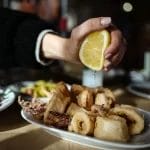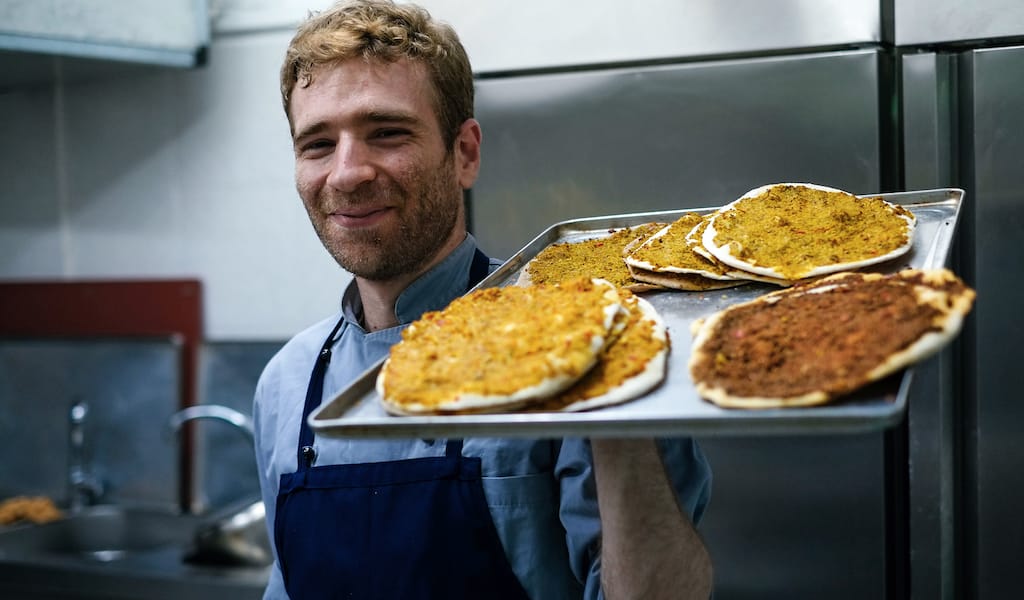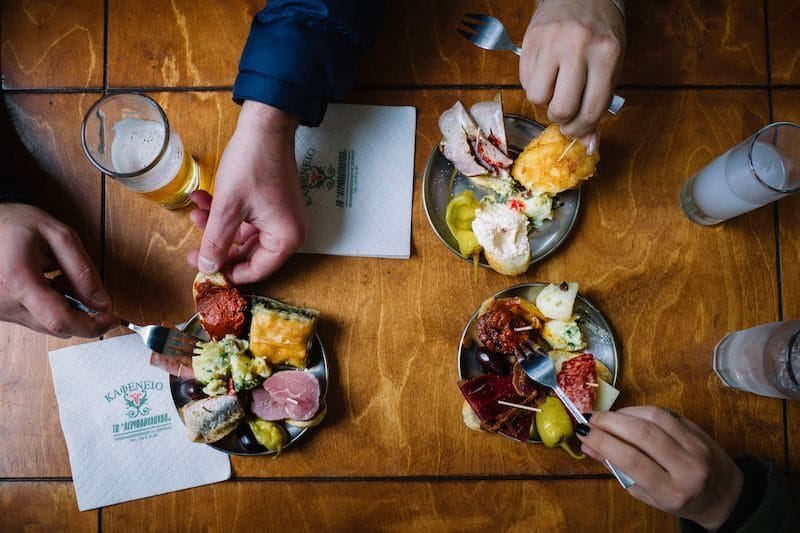Souvlaki might just be Greece’s most popular food. Meat cooked on a stick, wrapped in a pita, dressed with sliced tomato and onion and a dollop of tzatziki, it can be eaten on the run – and it’s often the first thing visitors run to eat as soon as they arrive in this country. It’s an enduring favorite for Greeks, too. Not only is it delicious, but the standard kebab* is also inexpensive, costing around just 3 to 4 euros.
The challenge, then, is to find kebabs and gyros that are more imaginative, still juicy and delicious, with a wider range of fillings and toppings, perhaps even vegetarian and vegan options – and which are still moderately priced.
Thomas Golas, his sister Vicky Golas, and Tomas’s American wife, Keri, have the answer, at Nomsy Kebab Artisans in Glyfada.
Thomas and Vicky were practically born with kebab skewers in their hands instead of baby rattles. Their father, Thanasis, is part owner of the family business, O Thanasis, which has been serving souvlaki to Athenians and tourists for six decades, since 1964. Located at the bottom of Mitropoleos Street, just a heartbeat from Monastiraki Square, it is an internationally known institution with a strong and devoted following.
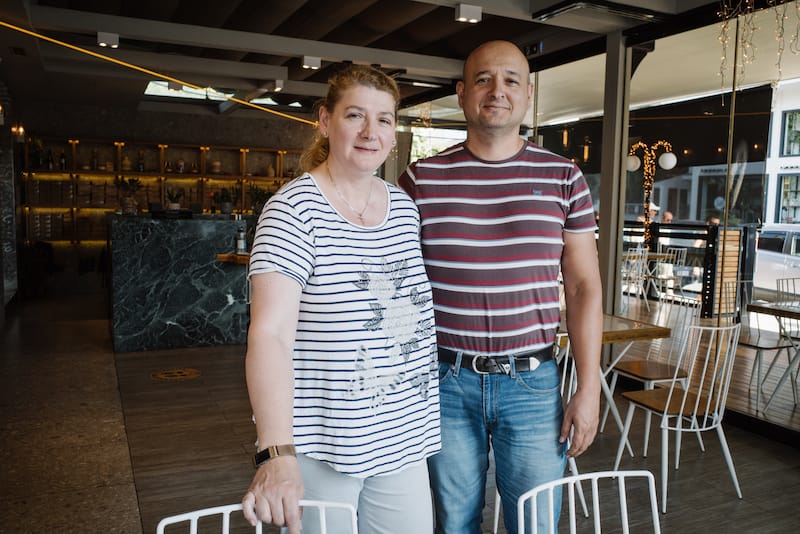
At first, Thomas’s studies took him in an entirely different direction. After earning a degree in electrical engineering in Pennsylvania, he found a job in Philadelphia, where he met and married Keri Schregel. But when Athens hosted the Olympics in 2004, the lure of Greece proved hard to resist and the couple decided to relocate. Once there, disappointed with job prospects in his field, he ended up back in the family business.
But sometimes, even the best traditions can do with a little tinkering, and Thomas and Keri dreamed of opening their own place. In addition to Thomas’s family background, Keri is an avid home cook with some professional experience as well. The two embarked on a search for the right spot and after finding an excellent location for their new kebab house on a prime street in central Glyfada, Thomas’s sister Vicky spent countless hours analyzing their father’s recipes, which had never been written down. She literally watched over Thanasis’s shoulder for months trying to figure out his combinations of ingredients, from which she and Thomas eventually made their own, perfected Nomsy version.
As Keri told us, “We thought we could make them even better. And so we made some modern, creative adjustments.”
When we bit into the “creatively adjusted” minced beef and lamb kebabs at Nomsy one weekday in June, we were pleasantly surprised. Not only were the grilled cylinders of meat succulent and tender, they were also accompanied by tasty grilled mushrooms, instead of the usual tomato, onion and tzatziki.
Not all traditions are worth preserving – unlike some fast-food eateries, at Nomsy, the owners make all their produce by hand, even the ketchup. They never use packaged spice mixes, MSG, powdered yogurt, or pre-cut meats. They even butcher their own meat, trimming off the fat, sinews and gristle themselves. “We found that this cuts costs as well as waste, and with prices going up, we’re looking for ways to be more creative without cutting quality,” Thomas says. “We also want to produce food that our children and other kids can eat without worrying.”
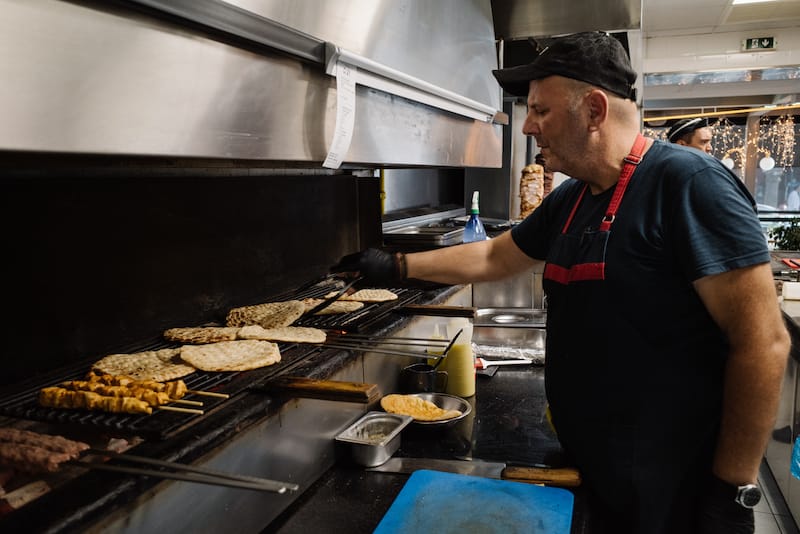
Since we couldn’t make up our minds on what to order, Thomas and Keri decided to offer us a random sampling: the house salad, a velvety fava, the mushroom kebab plate, crunchy baked and breaded halloumi sticks with ketchup, and as the main attraction, Black Angus gyro surrounded by sides of guacamole, yogurt sauce, tomatoes and onions, with slices of pita bread.
As we ate, Thomas explained the difference between gyros and souvlaki. Kebabs – skewered meat or chicken, grilled flat – are designed to feed a large group. Although they take longer to prepare, they are much easier and quicker to cook. Gyros, meanwhile, are made from stacked meat cooked on a rotisserie and thinly sliced. To serve gyro to the same number of people will take longer because you need a couple of spins of the giant rotisserie just to slice off enough meat for one serving.
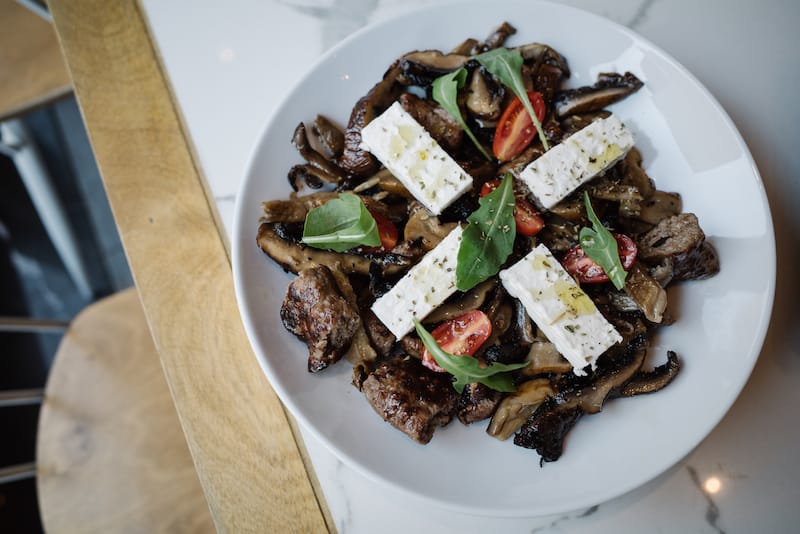
The menu at Nomsy Kebab Artisans is so tempting, you feel like trying everything. We’re sorry we didn’t have room for the hummus, the Anatolian pitas, the chicken gyro “pizza” with mozzarella, Parmesan, arugula and tomato sauce, or even the tofu with tahini, guacamole and fried onions.
In addition to the food, we were charmed by the simple décor – wooden floors and tables, open cabinets, green plants in attractive pots – the concern for universal access (ramps at the entrance and to the restrooms) and for the environment (insulated cardboard instead of plastic for takeaway), the immaculate kitchen and preparation area, and the polite and friendly staff.

“We’ve only been open for two years and we are still evolving,” says Keri. “I’ve worked in restaurants myself and have been interested in cooking for as long as I can remember, and love making breakfast and desserts. Last Christmas, I made 5,000 cookies which we put in little boxes to give our customers. That was something I won’t be doing again, but I do want to have something sweet to end the meal with.”
We’ll keep an eye on this space. There are bound to be new creations.
As for the name, Keri told us, “The word Nomsy is kind of a mishmash of ‘nom nom’ (in English) and nostimos, ‘delicious’ in Greek.” The addition of Artisans in the title speaks for itself – Thomas, Vicky and Keri are true kebab artisans, designing their dishes to please the eye and the taste buds of their customers, with great respect for both novelty and tradition.
*While the words kebab and souvlaki are used interchangeably in this article – referring to meat or even vegetables grilled on a stick – in other parts of the world, especially the Middle East, South Asia and Turkey, kebab, a Turkish word derived from the Arabic, can refer to dozens of other ways of preparing meat that have nothing to do with a skewer. In the past decade, with more and more people abstaining from meat, Greek souvlaki comes in many more versions than it did in the past.
Published on July 26, 2022
Related stories
March 16, 2022
AthensQuick Bite: On this afternoon food tour of Exarchia, we’ll explore this vibrant neighborhood’s roots in political activism but also investigate why it is also home to some of the city's best eats. This 6-hour tour includes more than a dozen essential bites, sips and stops that illustrate the history and culture of this iconic…
May 14, 2021
AthensQuick bite: On this 5½-hour food tour, we will explore the culinary backstreets and secrets of downtown Athens, in search of the soul of this historic yet always vibrant city. From downtown Athens, one’s eyes rest on the timeless vision of the Acropolis up on the hill, looming grandly above this ancient Greek city. But…
May 13, 2021
AthensQuick bite: On this food tour in Plaka, we will explore the district's culinary diamonds in the touristy rough while at the same time getting a sense of how this ancient district shaped the growth of modern Athens. The historic Plaka district might be one of Athens’ most popular tourist destinations, but there’s another part…












































